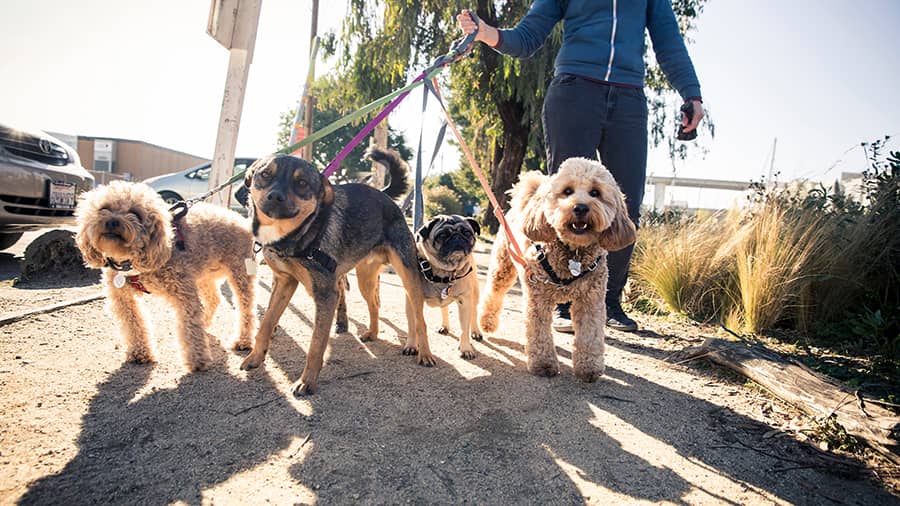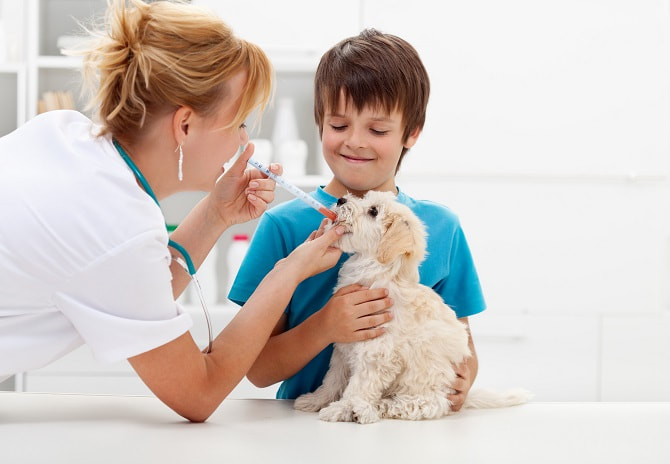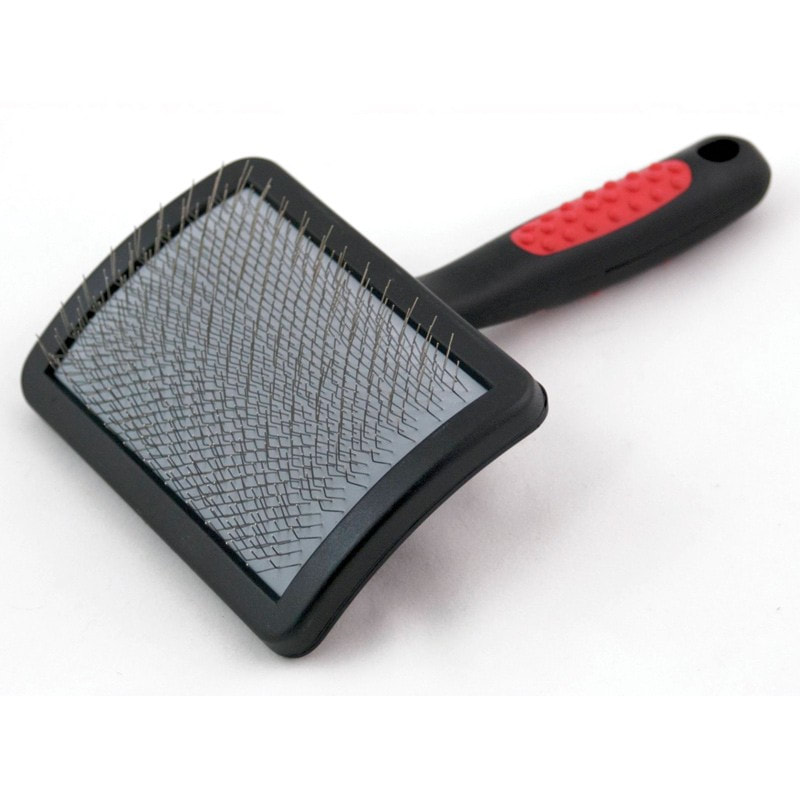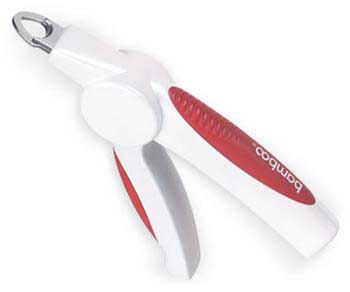New Owner's Checklist
|
Plan Your Schedule And Have A Support System
The best time to plan out your puppy's schedule is before you bring him home. Consider where the pup will stay during the day when no one is home, and have a list of pet sitters handy. Remember, young pups have small bladders and are lucky to "hold it" for 3-4 hours at a time!
|
|
Make An Appointment With Your Veterinarian
Remember, your puppy MUST see a veterinarian within 72 hours of leaving Red Spring Farm or the Health Warranty is void! Since pickup days are Saturdays, this means that you should schedule the appointment for the following Monday prior to pickup day.
If you do not have a current veterinarian, don't just choose a random vet clinic in your area. Check out reviews and ask local pet owners. |
|
Sign up for Baxter & Bella, the online puppy school
Your pup has a great foundation here, but perfect family dogs are made, not born. I could not be more please with trainers Amy and Scott Jenson of Baxter & Bella, and their online puppy school. The step-by-step lessons, how-to videos, training methods, materials, and resources will help your family successfully integrate your pup into your home. Unlimited one-on-one video conferencing and online canine coaching classes are included.
Enter discount code RSF (for Red Spring Farm) at checkout to save 25%. The program is set up for you to complete the first two units before your puppy comes home. Visit Baxter & Bella's website HERE to learn more about how it works and what’s included. |
|
Do Your Own Research On Types Of Parasite Prevention
View Our Specific Product Recommendations Here
I really struggle with recommending flea/tick preventatives. You absolutely do not want your pup to have fleas/ticks (dogs can get Lyme's Disease too)! But, I strongly believe that the chemicals used in preventive medication are not healthy for your dog- OR for you! I urge you to be wary of what your vet recommends... the newest "all-in-one" oral preventive medication is not what I recommend for your pup.
|
|
Order Our Dog Food Ahead Of Time! It CANNOT Be Bought In Stores!
View Our Specific Product Recommendations Here
Pawtree Dog Food is the foundation of our dogs' diet. You CANNOT buy this dog food in stores! It is made fresh in the U.S. and delivered to your door. This means that it is very important for you to order your puppy's food 2-3 weels prior to take home day. Remember, you want the kibble to be fresh, so don't order it months in advance!
*Do not change your puppy's food the first day in their new home, as this can cause stomach upset. If you do not plan to continue your pup on Pawtree food, please order a small bag to get your pup through the transition to your home.
|
|
Choose A Hard Toy, A Soft Toy & A Couple Chewing Options
View Our Specific Product Recommendations Here
You are going to want to buy your puppy all sorts of different toys before you get them home... but WAIT! There is no need to buy your puppy 20 toys before it arrives home. Puppies have preferences, some like soft toys, others like "hard" or rubbery toys. With retriever cross breeds, sometimes you just need one toy (the magical "ball")! So, buy your pup a small variety and once you see what you puppy prefers, then you can buy new toys. One major rule with puppy toys... SANITIZE the toy before you give it until your puppy is done with its vaccines! Even if the toy is brand new from PetSmart, you never know what dog or puppy has had contact with it.
*1 part bleach to 32 parts water for disinfecting toys. |
|
Set Up A Playpen
View Our Specific Product Recommendations Here
You need to have a puppy pen set up for the protection of your puppy. This is a place that you can put your pup when you can't have BOTH eyes on him, and when you are gone for extended periods of time (too long to leave in the crate alone). The playpen shouldn't be overly large, just enough to provide a place for sleeping, simple playing, and pottying. Most puppies quickly learn to tear up potty pads. We recommend a potty pan (we use a boot tray) with pelletized pine pellets and a couple handfuls of alfalfa pellets (to mimic the smell of grass). Both of these items can be found at Tractor Supply. Using a potty pan can be confusing to a puppy, and slow house training success. Only use one if it is absolutely necessary.
|
|
Have A Crate Ready
View Our Specific Product Recommendations Here
Providing your puppy with a crate is like providing your puppy with its own space. If introduced to the crate properly, your puppy will learn to love it! You can choose a wire or plastic crate. In recent years, wire crates have increased in popularity and most of my puppy owners choose the wire crate with a divider. This allows you to expand the crate as your puppy grows, and therefore, you won't have to buy multiple crates. I usually use and prefer plastic crates because I have multiple dogs, and this gives them den-like privacy. Whichever style you decide, your puppy will adapt to either.
|
|
Consider A Snuggle Puppy/Comfort Item!
View Our Specific Product Recommendations Here
We provide a blanket with every one of our puppy packs. This blanket is kept in our home and is rubbed all over your puppy's littermates before you leave. This gives your puppy a "comfort item" which you can keep handy as your pup transitions into your new home. If you want to go a step further than the blanket, let us know in advance and you can purchase a snuggle pup from us (at cost, we just order it off Amazon). We will keep the snuggle puppy in our puppy room and let the litter sleep with it. When you take it home, the snuggle puppy has a heat pack and a battery operated "heartbeat" that gently vibrates, simulating your puppy sleeping with its littermates. Many pups who struggle with sleeping alone in their crate greatly improve with a Snuggle Puppy.
|
|
Easy To Clean Bedding
View Our Specific Product Recommendations Here
Coming from someone who has owned many, many dogs- go ahead and invest in bedding that will withstand all the stages your puppy will go through in the first year (housebreaking, chewing) and beyond. If you want to wait until your puppy is older to invest in a high quality bed, though, fleece blankets from the dollar store work wonderfully in a crate for a new pup! Just be cautious to remove it as your puppy gets older and begins chewing heavily, as it could become a choking hazard!
|
|
Collars, Harnesses & Leashes
View Our Specific Product Recommendations Here
Even though your pup has a microchip, make sure that your pup has a collar on with an ID tag anytime that you leave the house or let them out in the yard! The only time that the ID collar needs to be removed is when puppy goes into it's crate. For training a pup to "heel" I have had the best luck with martingale collars, which provide feedback to your pup. Otherwise, when walking, a well fitted harness is the most comfortable and safe method of walking your dog. Do not use extendable leashes when walking your pup. They teach your puppy to pull and they are not safe. Standard 4-5' leashes are best for walks.
|
|
Get The Grooming Basics
View Our Specific Product Recommendations Here
Your puppy will have a very easy to care for "puppy coat" until it turns 8-14 months old. Once its adult coat comes in, it will be significantly more prone to knots and "mats." It is so, so important that you get your dog used to grooming as a puppy to prepare him for adult grooming. There are 3 brushes that you will need for your pup, a slicker brush, a rake brush, and a dematting tool. Your puppy will get a "Triple F" groom before it leaves us (Feet, Face, and Fannie), and until it is fully vaccinated at 16 weeks old, you should groom at home. Immediately after your vet clears your pups as protected against disease, schedule an appointment with your groomer for it's first groom so your puppy can get used to the groomers when it is still young.
|
|
Remember, Grooming Includes Ears, Nails & Teeth!
View Our Specific Product Recommendations Here
Grooming doesn't stop with just the hair! Ears, nails, and teeth must be managed as well. Every dog is different, but we have found that minimal intervention is often best. We trim the ear hair on the outside of the ear, and if we have a pup with particularly hairy ears, ask your vet about plucking some of the hair to keep moisture from getting trapped in the ear canal. Nails need to be clipped regularly. When your pup is young, handle the feet as much as possible.
|
|
Provide Good Footing On Hard Surfaces
View Our Specific Product Recommendations Here
While we do everything that we can to prevent genetic ailments, certain conditions (such as hip dysplasia) can be caused by the environment as well. Slick floors, such as hardwood and linoleum, can cause a puppy to slip and slide. This, as well as going up flights of stairs, can be very damaging to growing hip joints. Carpets, runners, and rubber mats will provide traction and prevent these issues. If your pup must go up stairs, carry him!
|


















